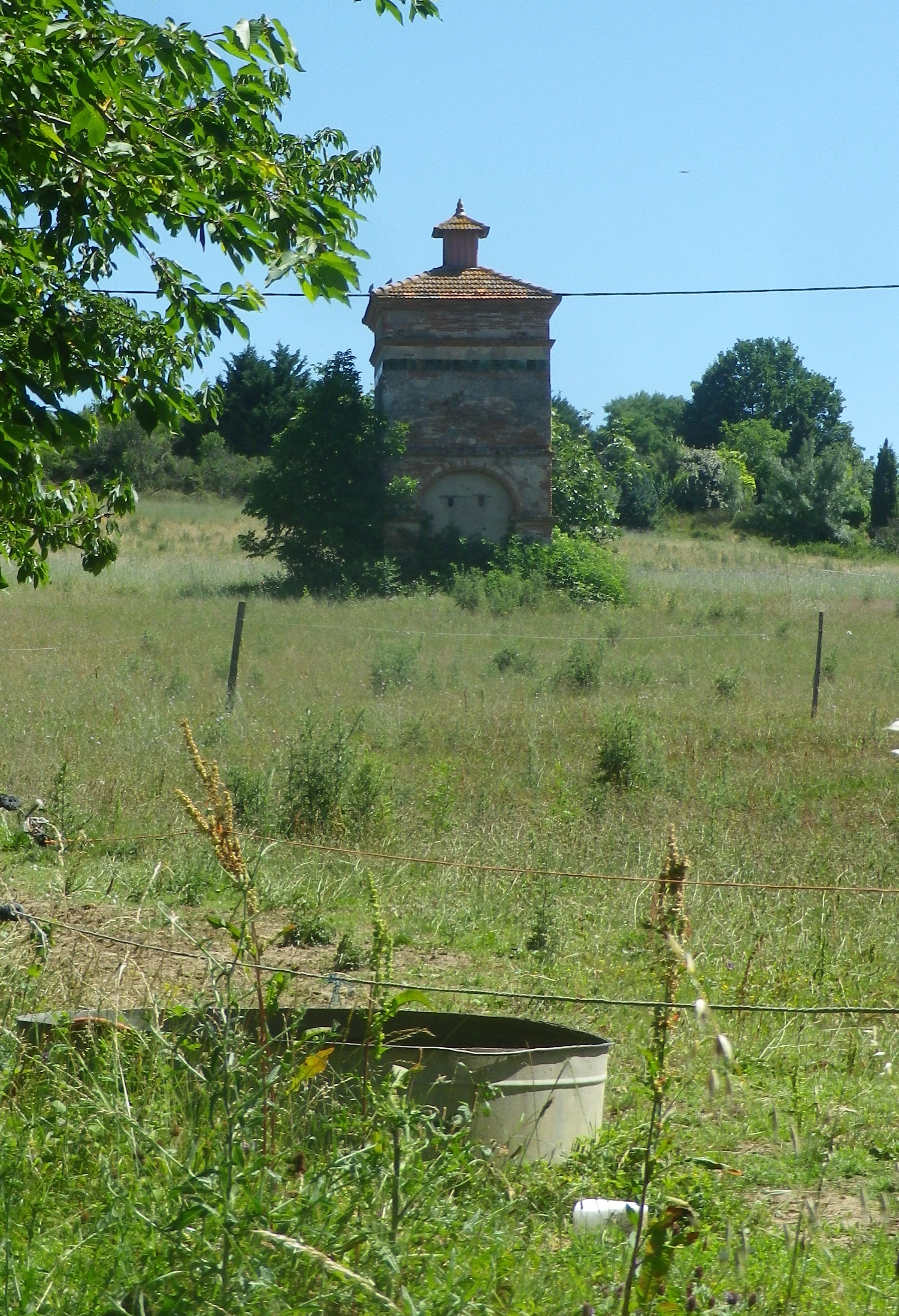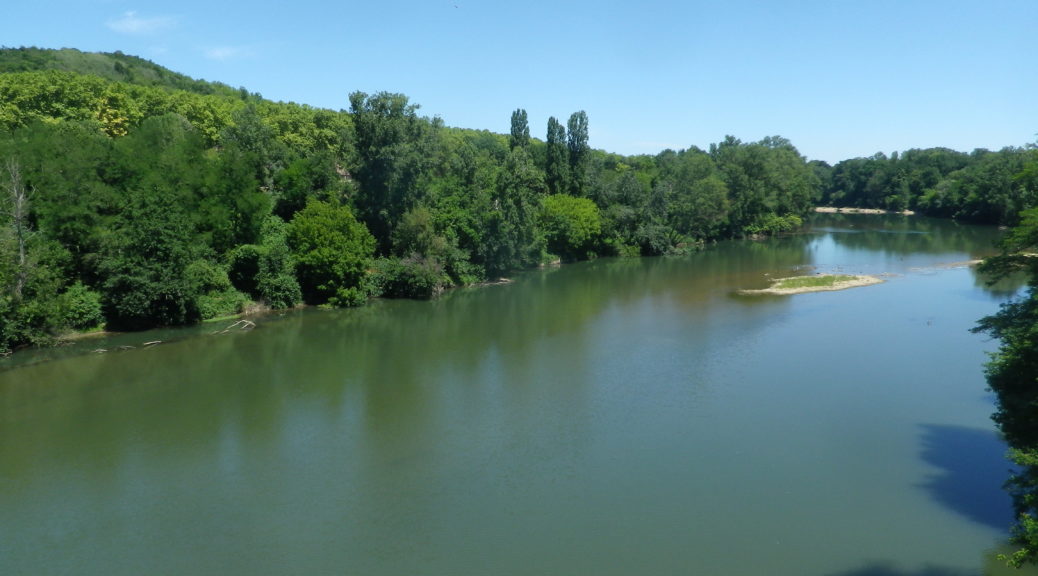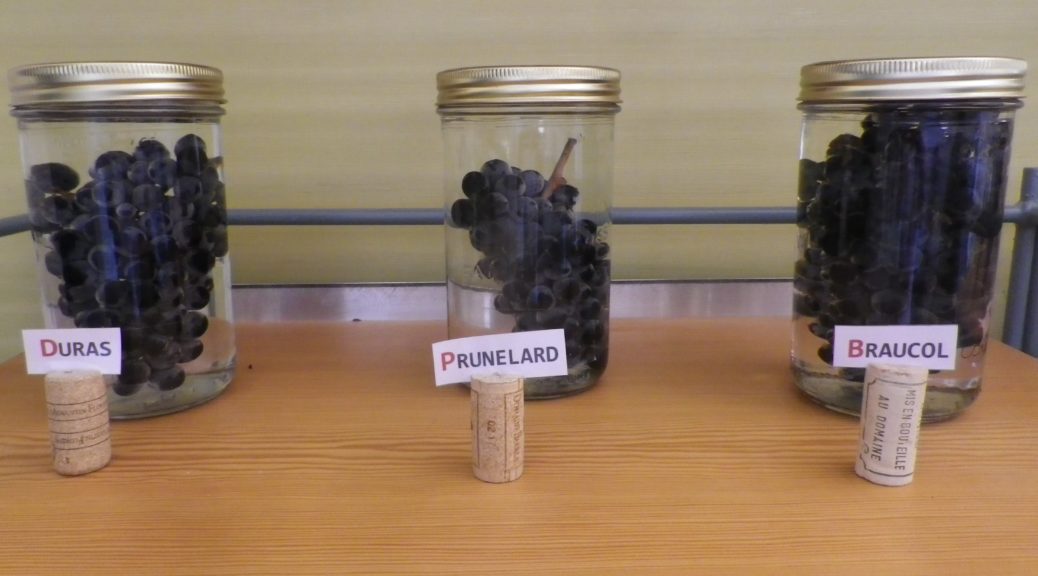Rabastens, and the Gaillac wine region that it forms a part of, is an unexpected delight. My first time in this southwestern wine region, one of France’s oldest, left me charmed. Toulouse is the regional hub, fascinating in its own right, as is nearby Albi. Rabastens, though, in spite of its proximity to both, retains its quiet rural quality. Not that the town wasn’t hopping on a very crowded market day last June! Local fruit and veg, as well as bottles or cases of local wines, from in the Rive Droite district of the Gaillac wine region, were on offer direct from vintners. That, of course, is why I was there.
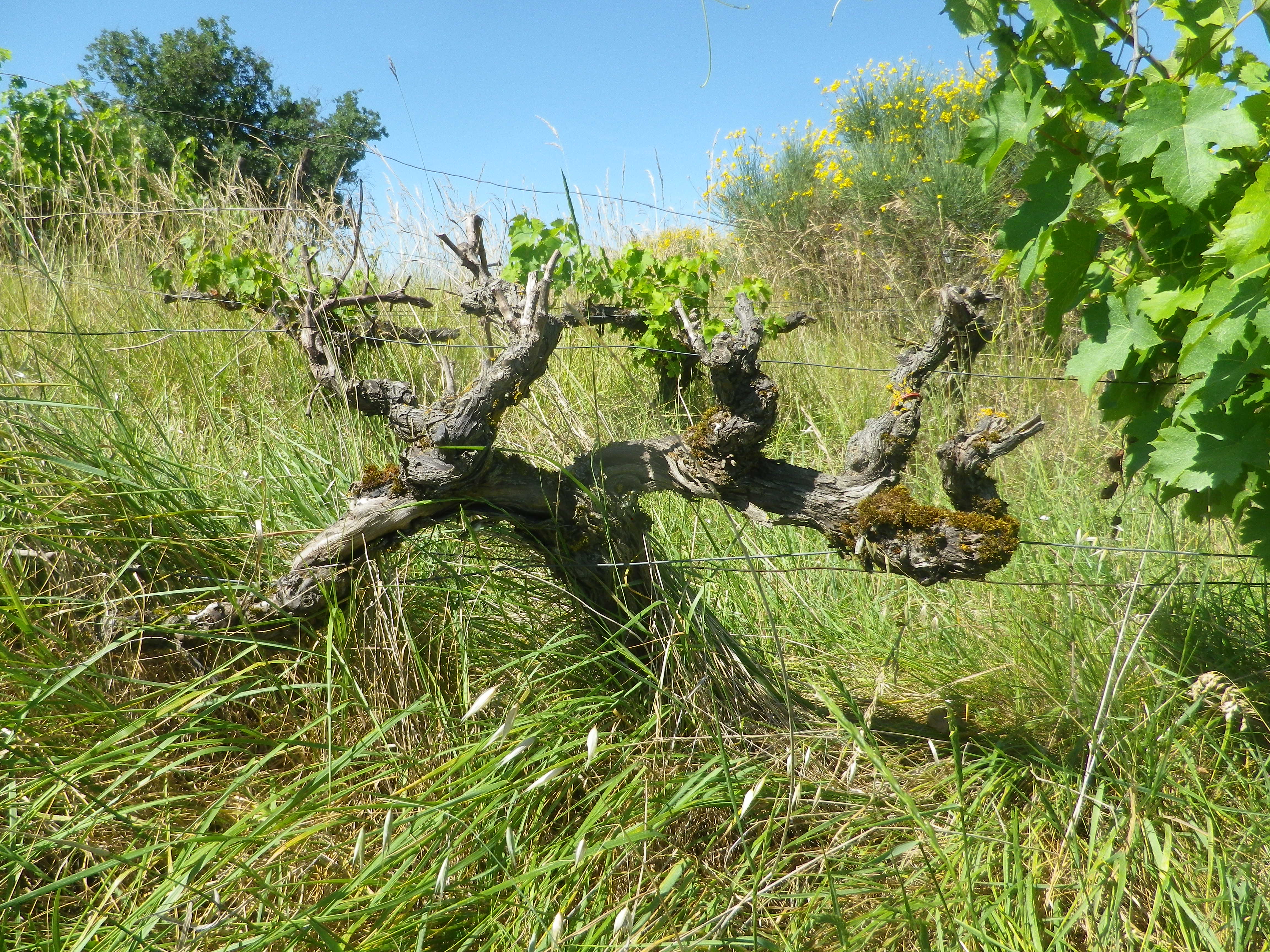
The trail I rambled (hike is an overly energetic word for this easy, short itinerary), began on the outskirts of town, at the local wine cooperative. Fortunately, given the crowds at the market, I found plenty of parking options on that end of town. Like the cooperative, this trail focused on vintners and their wines: Amedee, being a former vintner. Shortly after parking, I (and Marco, my hiking buddy for this trip), were passing along vines, enjoying the song of the birds and the buzz of cicadas, brought out by the heat.
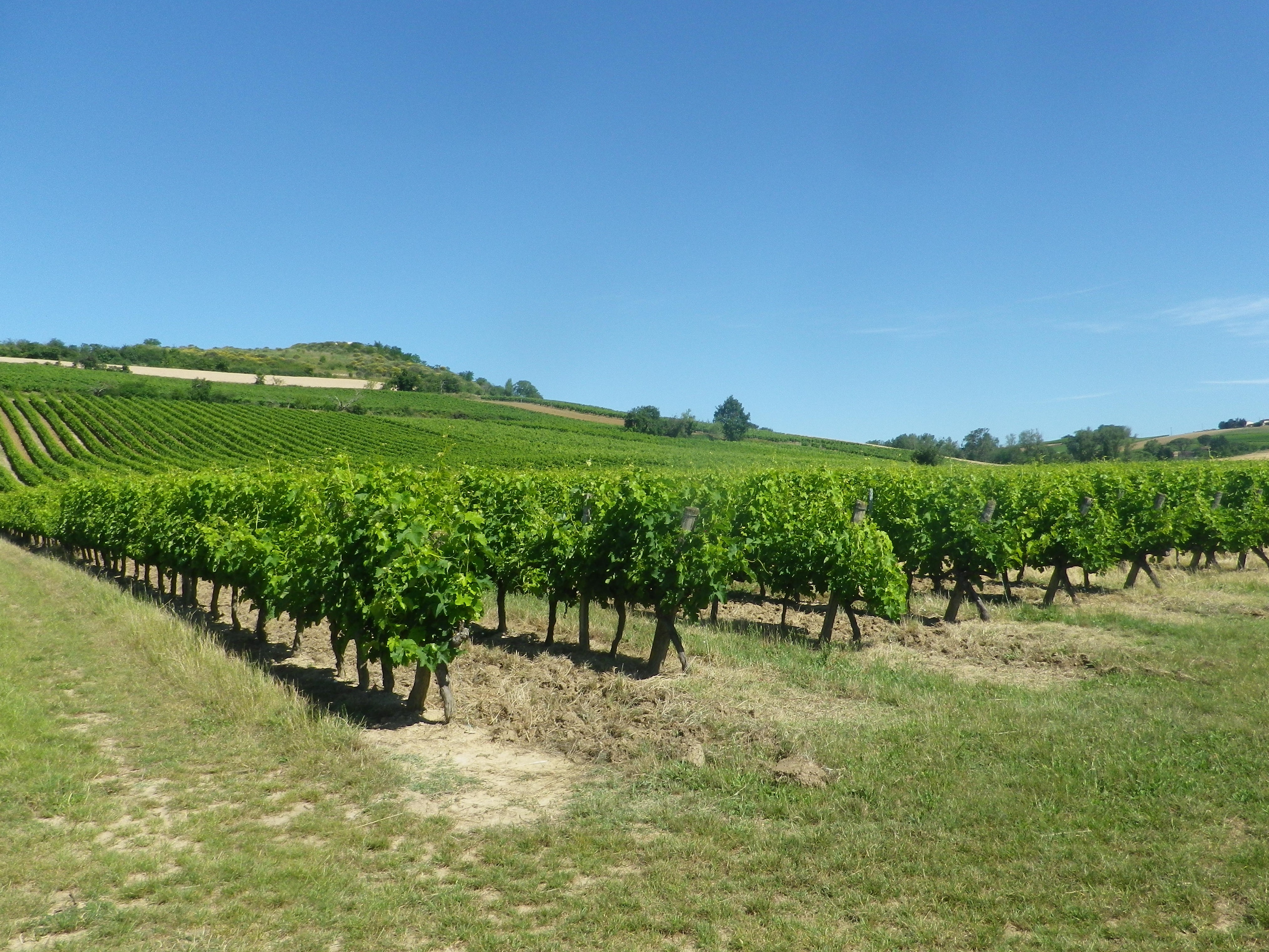
Making a turn uphill, we followed a grassy trail devoid of vines on one side. Instead, splashes of color from myriad wild flowers, all in full bloom that day, popped out against the grasses. The variety of flowers and their abundance were amazing. Focused on photographing the flowers, (and Marco, a hunter, on wildlife tracks) we had little notice of much else. It wasn’t until near the top of the hill that we turned to admire the rest of the scenery.
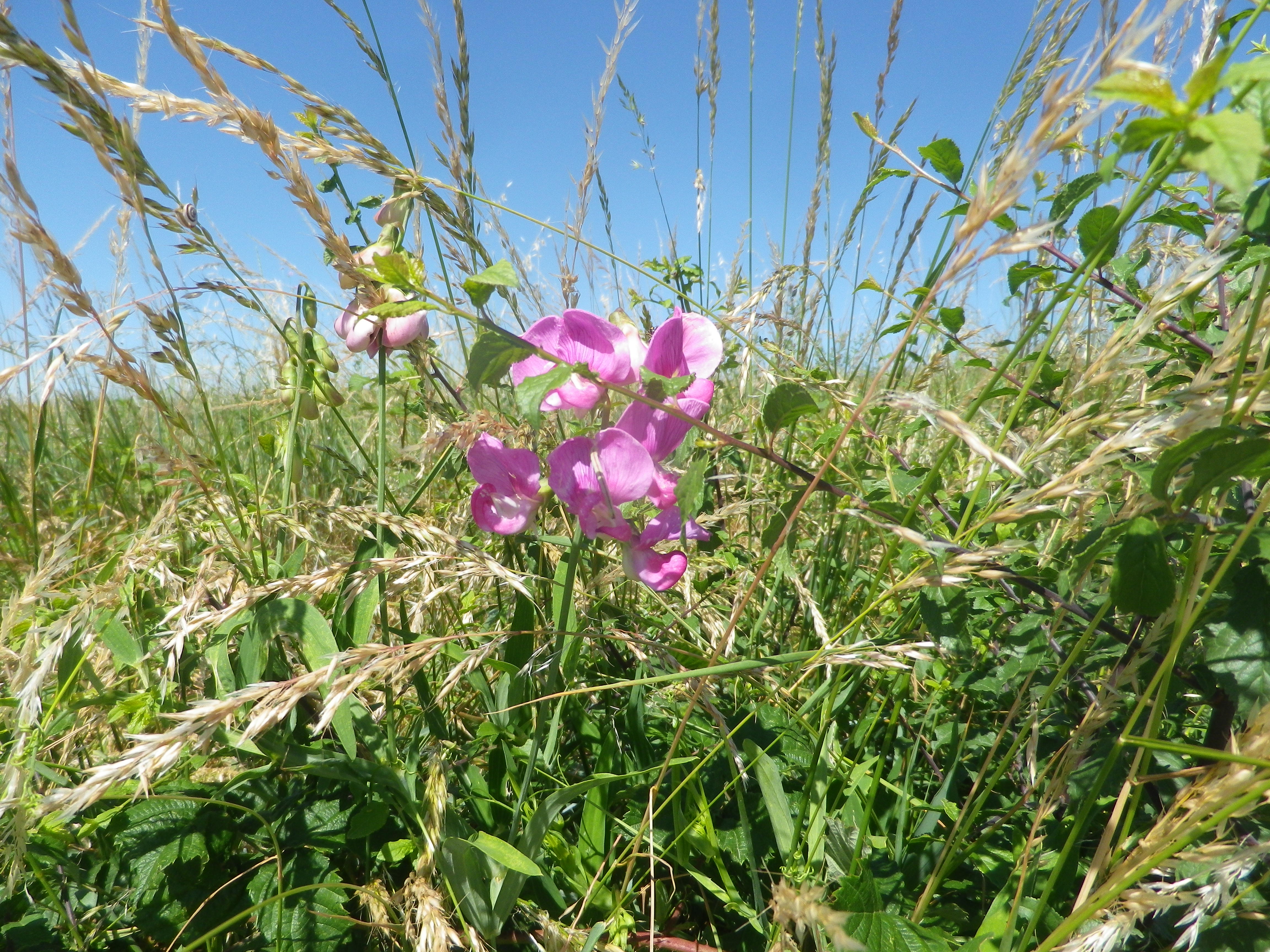
There, to the south, were snow-capped Pyrenees! They didn’t photograph well, due to haze. Haze likely caused by the multitude of rivers that pass between the trail in Rabastens and the mountains. Rabastens lies along the Tarn, which with the Hers and Ariege flow into the Garonne not far to the west, making this area a real watershed. Additionally, it is easy to see why grapes do well here: gentle ridges rise and fall from here to the mountains, and the south-facing slopes are great for vine-planting.
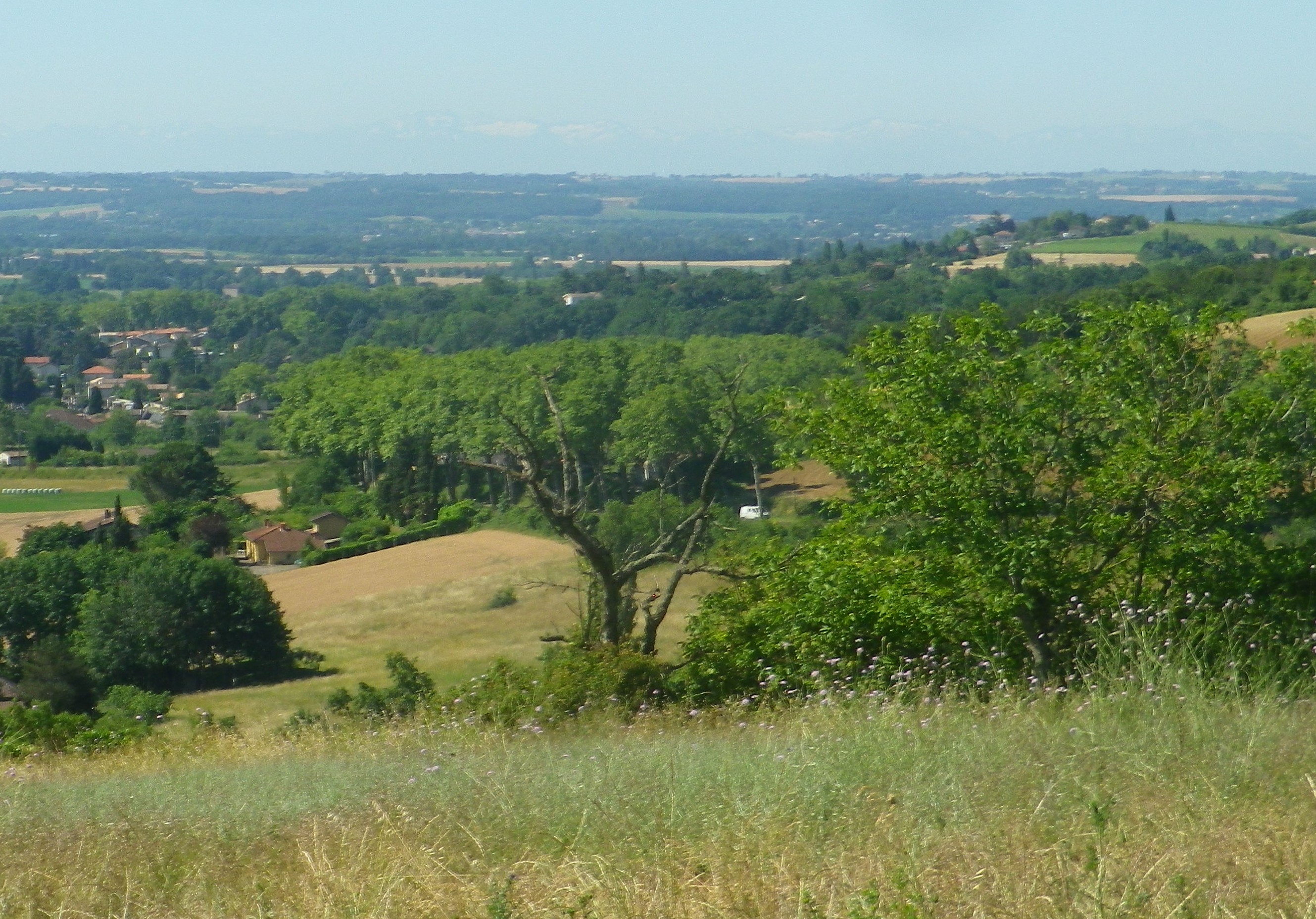
Once on top, the trail turned almost 180 degrees, and headed downhill, through a little draw created by a break in the ridgeline. A stable, then finally an old farm house appeared. After a few more meters, a dovecote appeared. These famed dovecotes, some hundreds of years old and lovingly maintained, show an amazing breadth of style and architecture! Centuries ago, vintners used pigeon droppings to ameliorate the soil around the vines. We walked under a canopy of trees, enjoying the architecture and a respite from sun. In no time, we’d returned to the cooperative for a wine-tasting, and Rabastens, for a well-earned lunch!
